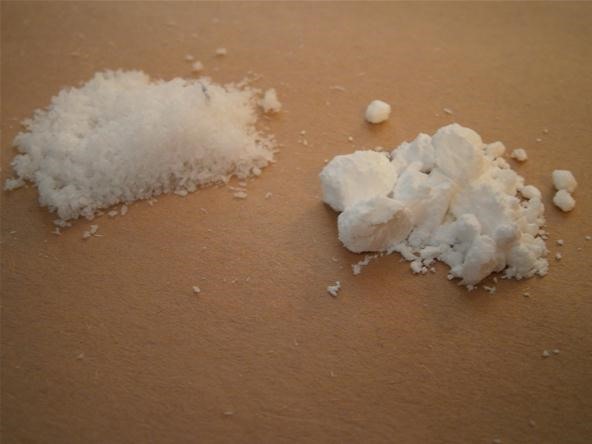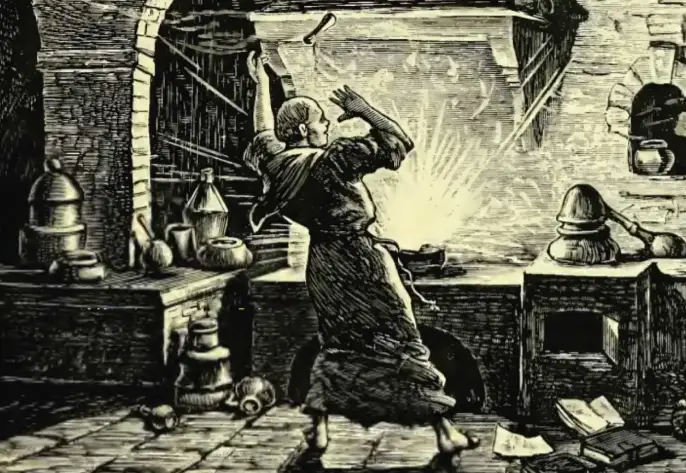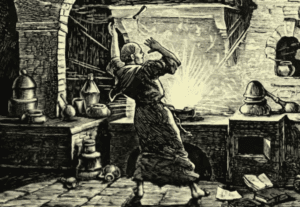Introduction: Understanding the Basics of Gunpowder
For those intrigued by the science and history behind firearms, learning how to make gunpowder can be a fascinating endeavor. Gunpowder, also known as black powder, has played a significant role in warfare and the development of firearms for centuries. This article will provide you with an overview of the history, composition, and steps involved in making gunpowder.
History and significance of gunpowder
Gunpowder’s invention is often attributed to ancient China in the 9th century. Initially used for medicinal purposes, it later found applications in warfare, leading to the development of early firearms. The discovery and refinement of gunpowder dramatically influenced military tactics, warfare strategies, and global history.
Chemical composition and components of gunpowder
Gunpowder consists of three primary ingredients: sulfur, charcoal, and potassium nitrate (also known as saltpeter). These ingredients are combined in specific ratios to create an explosive mixture. The sulfur acts as a fuel, the charcoal provides a source of carbon, and the potassium nitrate supplies oxygen to sustain combustion.
Here’s a simple breakdown of the components and their functions:
- Sulfur:
- Acts as a fuel and aids in the ignition of the gunpowder mixture.
- Charcoal:
- Provides carbon, which aids in the combustion process and accelerates the reaction.
- Potassium nitrate:
- Supplies oxygen for the combustion process to sustain the reaction.
It’s crucial to note that making gunpowder can be dangerous and illegal in some jurisdictions. proper safety precautions must be taken, and it is advisable to consult local laws and regulations before proceeding.
While the exact process of making gunpowder may vary, it typically involves grinding the components to a fine powder and thoroughly mixing them. This ensures a homogenous mixture for efficient combustion and explosion.
Remember, gunpowder is highly sensitive to heat, friction, and impact, so be extremely cautious when handling it. Safety should always be the top priority.
In conclusion, understanding the history and composition of gunpowder can provide valuable insights into firearms development. However, it is essential to emphasize that making gunpowder should only be pursued for academic purposes under controlled and legal circumstances.

Ingredients and Equipment
Key ingredients for making gunpowder
Making gunpowder requires three key ingredients: sulfur, charcoal, and potassium nitrate (also known as saltpeter). These ingredients can be found at chemical supply stores or online. It’s important to note that gunpowder is highly flammable and can be dangerous if mishandled. Always follow safety precautions and local laws when working with these ingredients.
Required equipment and safety precautions
To make gunpowder, you will need the following equipment:
- Mortar and pestle: Use this to grind the ingredients into a fine powder. Make sure the mortar and pestle are made of non-sparking materials such as porcelain, brass, or marble.
- Measuring tools: Accurate measurements of the ingredients are crucial for a successful batch. Use a scale to measure the precise amounts of sulfur, charcoal, and potassium nitrate.
- Sieve: After grinding the ingredients, pass the powder through a sieve to ensure a uniform consistency.
- Mixing container: Use a non-sparking container to mix the ingredients together. A plastic or glass container will work best.
- Safety gear: It’s important to protect yourself when handling gunpowder. Wear safety goggles, gloves, and a dust mask to prevent any contact with the ingredients or inhalation of the fine powder.
- Fireproof surface: Set up your workspace on a fireproof surface, such as a metal table or a concrete floor. This will help prevent accidents and a potential fire hazard.
Remember, making gunpowder is a delicate process that requires caution and adherence to safety guidelines. Always work in a well-ventilated area and keep fire extinguishing equipment nearby. Additionally, be aware of the legal regulations surrounding the possession and usage of gunpowder in your country or region.
By following these guidelines and taking necessary safety precautions, you can safely make gunpowder for specific applications such as pyrotechnics or black powder firearms. It’s essential to respect the power and potential dangers of gunpowder and use it responsibly.

Step-by-Step Process of Making Gunpowder
Grinding and mixing the ingredients
Making gunpowder at home may sound like a daunting task, but with the right ingredients and careful steps, it can be done safely. Here’s a step-by-step guide on how to make gunpowder:
- Gather the ingredients: Gunpowder is made from three main components – sulfur, charcoal, and potassium nitrate (saltpeter). Ensure you have the correct quantities of each ingredient for the desired amount of gunpowder.
- Grind the ingredients separately: Begin by grinding each ingredient individually into a fine powder. Use a mortar and pestle or a coffee grinder for this process. Ensure that each ingredient is ground to a consistent and fine texture.
- Mix the ingredients: Combine the ground sulfur, charcoal, and potassium nitrate in the proper ratio. The standard ratio is 75% potassium nitrate, 15% charcoal, and 10% sulfur. Thoroughly mix the ingredients to ensure they are evenly distributed.
Combining the components and achieving the desired consistency
- Wet mixing: For optimum performance, it is recommended to wet mix gunpowder. Sprinkle a small amount of water onto the mixed ingredients and thoroughly incorporate it. The water helps to bind the components together and achieve a consistent paste-like texture.
- Granulation: Once the mixture reaches a paste-like consistency, it is ready for granulation. Use a screen sieve to push the mixture through and produce small granules. This step allows for uniform combustion and a controlled burn rate.
- Drying: Spread the granulated gunpowder on a flat surface, such as a tray or newspaper, and let it dry in a well-ventilated area. This typically takes a few days, but it may vary depending on the humidity level.
Remember, the production and use of gunpowder can be dangerous if proper safety precautions are not followed. It is essential to research and understand the laws and regulations related to gunpowder in your jurisdiction.
By following these steps carefully and taking necessary safety measures, you can make gunpowder at home. However, it is crucial to emphasize that the responsible and legal use of gunpowder is of utmost importance.
Please note that the instructions provided here are for educational purposes only, and it is always recommended to consult experts or follow established guidelines when working with potentially hazardous materials like gunpowder.
Testing and Storing Gunpowder
Methods to test the quality and potency of gunpowder
When it comes to gunpowder, its quality and potency are crucial for a safe and effective experience. Here are a few methods you can use to test the quality of gunpowder:
- Visual Inspection: Examine the gunpowder for any discoloration, clumping, or foreign particles. High-quality gunpowder should appear consistent in color and texture.
- Burn Rate: Measure the burn rate by loading a known weight of gunpowder and igniting it. Compare the time it takes for the charge to burn to a consistent size with the expected burn rate.
- Chronograph Test: Use a chronograph to measure the speed of the bullet fired using the gunpowder. This test helps assess the consistency and power of the gunpowder.
It’s important to note that testing gunpowder should only be done in a controlled environment by trained professionals. Safety precautions, such as wearing protective gear and working in well-ventilated areas, should always be followed.
Proper storage techniques to ensure longevity and safety
Proper storage of gunpowder is essential to maintain its potency and ensure safety. Here are some techniques to consider:
- Keep in a cool, dry place: Gunpowder is sensitive to moisture, so store it in airtight containers in a cool and dry location. Avoid storing it near sources of heat or flame.
- Label and organize: Clearly label your gunpowder containers with the date of purchase and batch information. It’s also wise to organize them in a way that avoids confusion and promotes easy access.
- Control access: Store gunpowder in a locked cabinet or safe, away from children, unauthorized individuals, or potential sources of ignition.
- Inspect regularly: Regularly check for any signs of deterioration, such as clumping or discoloration. Dispose of any compromised gunpowder safely according to local regulations.
Remember, proper storage and handling of gunpowder are critical for safety. Always adhere to local laws, regulations, and guidelines regarding the possession and storage of gunpowder to ensure a secure and responsible approach.
Alternative Methods and Safety Tips
For those interested in the science of chemistry or historical reenactments, learning how to make gunpowder can be an exciting endeavor. However, it is essential to approach this subject matter with caution and responsibility. This article will outline some alternative methods for making gunpowder and provide safety tips for handling it.
Exploring alternative methods for making gunpowder
While traditional gunpowder recipes use specific ingredients, such as sulfur, charcoal, and potassium nitrate, it is important to note that creating gunpowder at home may be illegal in some jurisdictions. Therefore, it is crucial to familiarize yourself with your local laws before proceeding.
One alternative method for creating a gunpowder-like mixture is to blend together ingredients that have similar chemical properties. For example, mixing finely ground charcoal, sulfur, and saltpeter (potassium nitrate substitute) can create a combustible mixture. However, it is important to understand that these homemade mixtures may not have the same potency or reliability as commercially manufactured gunpowder.
Safety precautions and guidelines for handling gunpowder
When working with any potentially hazardous materials, safety should always be the top priority. Here are some essential safety tips for handling gunpowder:
- Work in a well-ventilated area: Gunpowder can release toxic fumes, so it is important to work in a space with proper air circulation.
- Wear protective gear: When handling gunpowder, wear safety goggles, gloves, and a mask to protect yourself from potential burns, eye injuries, and inhalation of toxic particles.
- Store gunpowder properly: Keep gunpowder in airtight containers away from heat, flames, and any sources of ignition. Ensure it is stored in a cool and dry place.
- Handle gunpowder with care: Only handle small quantities at a time and avoid generating sparks or static electricity during the process. Avoid grinding or crushing gunpowder near open flames or heat sources.
- Dispose of unused gunpowder safely: If you have leftover gunpowder, do not dispose of it in the regular trash. Contact your local authorities to inquire about proper disposal methods.
Remember, it is important to exercise caution and respect all safety guidelines when handling potentially dangerous substances like gunpowder.
Introduction
In the world of DIY projects and historical reenactments, knowing how to make gunpowder can come in handy. Whether you are a hobbyist, a survival enthusiast, or simply curious about the science behind this explosive substance, learning the process can be both educational and empowering. However, it’s important to approach this topic with caution and responsibility.
Cautionary statements and responsible use of gunpowder
Making gunpowder at home should not be taken lightly, as it involves handling potentially dangerous chemicals. Before embarking on such a project, it’s essential to understand the associated risks and take the necessary precautions. Here are some cautionary statements and responsible practices to keep in mind:
- Safety first: Always prioritize safety when working with gunpowder. Wear appropriate protective gear, such as safety goggles, gloves, and a lab coat. Work in a well-ventilated area away from open flames, sparks, and sources of heat.
- Education and knowledge: Before attempting to make gunpowder, thoroughly research and understand the process. Familiarize yourself with the ingredients, measurements, and potential hazards involved. Only proceed if you are confident in your understanding and ability to follow safety protocols.
- Legal considerations: It is crucial to know and abide by the laws and regulations regarding the production, possession, and use of gunpowder in your jurisdiction. Engaging in illegal activities can have serious consequences, both legally and ethically.
- Responsible storage: Gunpowder should be stored in a secure location away from children, pets, and sources of ignition. Properly label containers and keep them dry, cool, and away from direct sunlight. Follow local guidelines for storage and disposal.
- Responsible use: If you choose to make gunpowder, use it responsibly and ethically. Understand its potential dangers and avoid using it for illegal or harmful purposes. Respect the power of gunpowder and handle it with caution.
While the knowledge and ability to make gunpowder can be intriguing, it is essential to emphasize the importance of safety, legality, and responsible use. Proper education and understanding of the risks associated with gunpowder are crucial in preventing accidents and misuse.
Remember, it is highly recommended to consult with experts, engage in proper training, and adhere to the laws and regulations of your area before attempting to make or use gunpowder.
Making gunpowder can be an exciting endeavor, but always prioritize safety, responsibility, and legality when handling this potentially hazardous substance.

